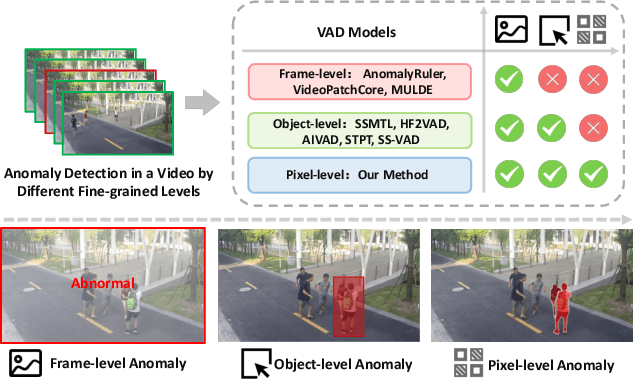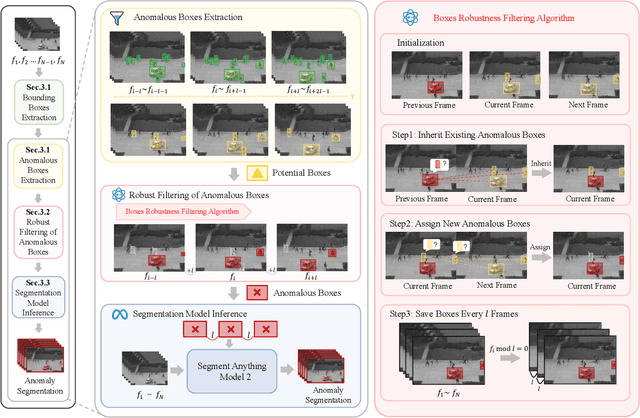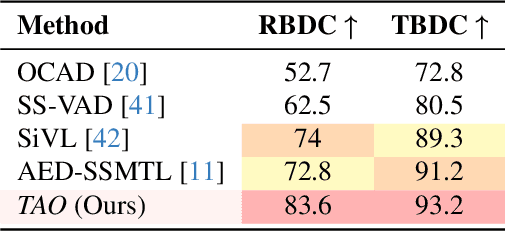Hengyu Liu
Advancing Knowledge Tracing by Exploring Follow-up Performance Trends
Aug 11, 2025



Abstract:Intelligent Tutoring Systems (ITS), such as Massive Open Online Courses, offer new opportunities for human learning. At the core of such systems, knowledge tracing (KT) predicts students' future performance by analyzing their historical learning activities, enabling an accurate evaluation of students' knowledge states over time. We show that existing KT methods often encounter correlation conflicts when analyzing the relationships between historical learning sequences and future performance. To address such conflicts, we propose to extract so-called Follow-up Performance Trends (FPTs) from historical ITS data and to incorporate them into KT. We propose a method called Forward-Looking Knowledge Tracing (FINER) that combines historical learning sequences with FPTs to enhance student performance prediction accuracy. FINER constructs learning patterns that facilitate the retrieval of FPTs from historical ITS data in linear time; FINER includes a novel similarity-aware attention mechanism that aggregates FPTs based on both frequency and contextual similarity; and FINER offers means of combining FPTs and historical learning sequences to enable more accurate prediction of student future performance. Experiments on six real-world datasets show that FINER can outperform ten state-of-the-art KT methods, increasing accuracy by 8.74% to 84.85%.
Automated Formalization via Conceptual Retrieval-Augmented LLMs
Aug 09, 2025



Abstract:Interactive theorem provers (ITPs) require manual formalization, which is labor-intensive and demands expert knowledge. While automated formalization offers a potential solution, it faces two major challenges: model hallucination (e.g., undefined predicates, symbol misuse, and version incompatibility) and the semantic gap caused by ambiguous or missing premises in natural language descriptions. To address these issues, we propose CRAMF, a Concept-driven Retrieval-Augmented Mathematical Formalization framework. CRAMF enhances LLM-based autoformalization by retrieving formal definitions of core mathematical concepts, providing contextual grounding during code generation. However, applying retrieval-augmented generation (RAG) in this setting is non-trivial due to the lack of structured knowledge bases, the polymorphic nature of mathematical concepts, and the high precision required in formal retrieval. We introduce a framework for automatically constructing a concept-definition knowledge base from Mathlib4, the standard mathematical library for the Lean 4 theorem prover, indexing over 26,000 formal definitions and 1,000+ core mathematical concepts. To address conceptual polymorphism, we propose contextual query augmentation with domain- and application-level signals. In addition, we design a dual-channel hybrid retrieval strategy with reranking to ensure accurate and relevant definition retrieval. Experiments on miniF2F, ProofNet, and our newly proposed AdvancedMath benchmark show that CRAMF can be seamlessly integrated into LLM-based autoformalizers, yielding consistent improvements in translation accuracy, achieving up to 62.1% and an average of 29.9% relative improvement.
MH-GIN: Multi-scale Heterogeneous Graph-based Imputation Network for AIS Data (Extended Version)
Jul 27, 2025Abstract:Location-tracking data from the Automatic Identification System, much of which is publicly available, plays a key role in a range of maritime safety and monitoring applications. However, the data suffers from missing values that hamper downstream applications. Imputing the missing values is challenging because the values of different heterogeneous attributes are updated at diverse rates, resulting in the occurrence of multi-scale dependencies among attributes. Existing imputation methods that assume similar update rates across attributes are unable to capture and exploit such dependencies, limiting their imputation accuracy. We propose MH-GIN, a Multi-scale Heterogeneous Graph-based Imputation Network that aims improve imputation accuracy by capturing multi-scale dependencies. Specifically, MH-GIN first extracts multi-scale temporal features for each attribute while preserving their intrinsic heterogeneous characteristics. Then, it constructs a multi-scale heterogeneous graph to explicitly model dependencies between heterogeneous attributes to enable more accurate imputation of missing values through graph propagation. Experimental results on two real-world datasets find that MH-GIN is capable of an average 57% reduction in imputation errors compared to state-of-the-art methods, while maintaining computational efficiency. The source code and implementation details of MH-GIN are publicly available https://github.com/hyLiu1994/MH-GIN.
EndoGen: Conditional Autoregressive Endoscopic Video Generation
Jul 23, 2025Abstract:Endoscopic video generation is crucial for advancing medical imaging and enhancing diagnostic capabilities. However, prior efforts in this field have either focused on static images, lacking the dynamic context required for practical applications, or have relied on unconditional generation that fails to provide meaningful references for clinicians. Therefore, in this paper, we propose the first conditional endoscopic video generation framework, namely EndoGen. Specifically, we build an autoregressive model with a tailored Spatiotemporal Grid-Frame Patterning (SGP) strategy. It reformulates the learning of generating multiple frames as a grid-based image generation pattern, which effectively capitalizes the inherent global dependency modeling capabilities of autoregressive architectures. Furthermore, we propose a Semantic-Aware Token Masking (SAT) mechanism, which enhances the model's ability to produce rich and diverse content by selectively focusing on semantically meaningful regions during the generation process. Through extensive experiments, we demonstrate the effectiveness of our framework in generating high-quality, conditionally guided endoscopic content, and improves the performance of downstream task of polyp segmentation. Code released at https://www.github.com/CUHK-AIM-Group/EndoGen.
WonderFree: Enhancing Novel View Quality and Cross-View Consistency for 3D Scene Exploration
Jun 25, 2025Abstract:Interactive 3D scene generation from a single image has gained significant attention due to its potential to create immersive virtual worlds. However, a key challenge in current 3D generation methods is the limited explorability, which cannot render high-quality images during larger maneuvers beyond the original viewpoint, particularly when attempting to move forward into unseen areas. To address this challenge, we propose WonderFree, the first model that enables users to interactively generate 3D worlds with the freedom to explore from arbitrary angles and directions. Specifically, we decouple this challenge into two key subproblems: novel view quality, which addresses visual artifacts and floating issues in novel views, and cross-view consistency, which ensures spatial consistency across different viewpoints. To enhance rendering quality in novel views, we introduce WorldRestorer, a data-driven video restoration model designed to eliminate floaters and artifacts. In addition, a data collection pipeline is presented to automatically gather training data for WorldRestorer, ensuring it can handle scenes with varying styles needed for 3D scene generation. Furthermore, to improve cross-view consistency, we propose ConsistView, a multi-view joint restoration mechanism that simultaneously restores multiple perspectives while maintaining spatiotemporal coherence. Experimental results demonstrate that WonderFree not only enhances rendering quality across diverse viewpoints but also significantly improves global coherence and consistency. These improvements are confirmed by CLIP-based metrics and a user study showing a 77.20% preference for WonderFree over WonderWorld enabling a seamless and immersive 3D exploration experience. The code, model, and data will be publicly available.
LearnAlign: Reasoning Data Selection for Reinforcement Learning in Large Language Models Based on Improved Gradient Alignment
Jun 13, 2025Abstract:Reinforcement learning (RL) has become a key technique for enhancing LLMs' reasoning abilities, yet its data inefficiency remains a major bottleneck. To address this critical yet challenging issue, we present a novel gradient-alignment-based method, named LearnAlign, which intelligently selects the learnable and representative training reasoning data for RL post-training. To overcome the well-known issue of response-length bias in gradient norms, we introduce the data learnability based on the success rate, which can indicate the learning potential of each data point. Experiments across three mathematical reasoning benchmarks demonstrate that our method significantly reduces training data requirements while achieving minor performance degradation or even improving performance compared to full-data training. For example, it reduces data requirements by up to 1,000 data points with better performance (77.53%) than that on the full dataset on GSM8K benchmark (77.04%). Furthermore, we show its effectiveness in the staged RL setting. This work provides valuable insights into data-efficient RL post-training and establishes a foundation for future research in optimizing reasoning data selection.To facilitate future work, we will release code.
Track Any Anomalous Object: A Granular Video Anomaly Detection Pipeline
Jun 05, 2025



Abstract:Video anomaly detection (VAD) is crucial in scenarios such as surveillance and autonomous driving, where timely detection of unexpected activities is essential. Although existing methods have primarily focused on detecting anomalous objects in videos -- either by identifying anomalous frames or objects -- they often neglect finer-grained analysis, such as anomalous pixels, which limits their ability to capture a broader range of anomalies. To address this challenge, we propose a new framework called Track Any Anomalous Object (TAO), which introduces a granular video anomaly detection pipeline that, for the first time, integrates the detection of multiple fine-grained anomalous objects into a unified framework. Unlike methods that assign anomaly scores to every pixel, our approach transforms the problem into pixel-level tracking of anomalous objects. By linking anomaly scores to downstream tasks such as segmentation and tracking, our method removes the need for threshold tuning and achieves more precise anomaly localization in long and complex video sequences. Experiments demonstrate that TAO sets new benchmarks in accuracy and robustness. Project page available online.
FlexGS: Train Once, Deploy Everywhere with Many-in-One Flexible 3D Gaussian Splatting
Jun 04, 2025Abstract:3D Gaussian splatting (3DGS) has enabled various applications in 3D scene representation and novel view synthesis due to its efficient rendering capabilities. However, 3DGS demands relatively significant GPU memory, limiting its use on devices with restricted computational resources. Previous approaches have focused on pruning less important Gaussians, effectively compressing 3DGS but often requiring a fine-tuning stage and lacking adaptability for the specific memory needs of different devices. In this work, we present an elastic inference method for 3DGS. Given an input for the desired model size, our method selects and transforms a subset of Gaussians, achieving substantial rendering performance without additional fine-tuning. We introduce a tiny learnable module that controls Gaussian selection based on the input percentage, along with a transformation module that adjusts the selected Gaussians to complement the performance of the reduced model. Comprehensive experiments on ZipNeRF, MipNeRF and Tanks\&Temples scenes demonstrate the effectiveness of our approach. Code is available at https://flexgs.github.io.
Autoformalization in the Era of Large Language Models: A Survey
May 29, 2025Abstract:Autoformalization, the process of transforming informal mathematical propositions into verifiable formal representations, is a foundational task in automated theorem proving, offering a new perspective on the use of mathematics in both theoretical and applied domains. Driven by the rapid progress in artificial intelligence, particularly large language models (LLMs), this field has witnessed substantial growth, bringing both new opportunities and unique challenges. In this survey, we provide a comprehensive overview of recent advances in autoformalization from both mathematical and LLM-centric perspectives. We examine how autoformalization is applied across various mathematical domains and levels of difficulty, and analyze the end-to-end workflow from data preprocessing to model design and evaluation. We further explore the emerging role of autoformalization in enhancing the verifiability of LLM-generated outputs, highlighting its potential to improve both the trustworthiness and reasoning capabilities of LLMs. Finally, we summarize key open-source models and datasets supporting current research, and discuss open challenges and promising future directions for the field.
OODD: Test-time Out-of-Distribution Detection with Dynamic Dictionary
Mar 13, 2025



Abstract:Out-of-distribution (OOD) detection remains challenging for deep learning models, particularly when test-time OOD samples differ significantly from training outliers. We propose OODD, a novel test-time OOD detection method that dynamically maintains and updates an OOD dictionary without fine-tuning. Our approach leverages a priority queue-based dictionary that accumulates representative OOD features during testing, combined with an informative inlier sampling strategy for in-distribution (ID) samples. To ensure stable performance during early testing, we propose a dual OOD stabilization mechanism that leverages strategically generated outliers derived from ID data. To our best knowledge, extensive experiments on the OpenOOD benchmark demonstrate that OODD significantly outperforms existing methods, achieving a 26.0% improvement in FPR95 on CIFAR-100 Far OOD detection compared to the state-of-the-art approach. Furthermore, we present an optimized variant of the KNN-based OOD detection framework that achieves a 3x speedup while maintaining detection performance.
 Add to Chrome
Add to Chrome Add to Firefox
Add to Firefox Add to Edge
Add to Edge